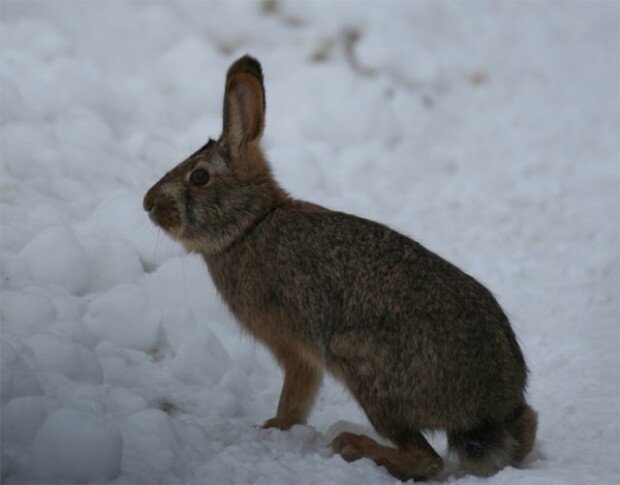Native ‘Korean hares’ to be included in the wildlife study
Native ‘Korean hares’ to be included in the wildlife study
Posted January. 03, 2023 07:54,
Updated January. 03, 2023 07:54

Starting 2023, the year of the black rabbit, the information on the habitat and the density of ‘Korean hare,’ the native species of the Korean Peninsula, will be open to the public. The study on the current status of Korean hares has not been disclosed so far, as it was excluded from the list of hunting animals designated by the Wildlife Protection and Management Act in 2005.
The National Institute of Biological Resources under the Ministry of Environment announced on Sunday that it would include Korean hares on the list of wild animals to be surveyed from this year. The annual survey of wild animals is conducted on more than 20 species, including hunting animals and indicator animals. Since the Korean hare was excluded from hunting animals in 2005, not much has been known about its habitat density and distribution for 18 years, even though it is an endemic species of the Korean Peninsula.
Our native Korean hare, also known as Lepus Coreana, is a mammal inhabiting the Korean Peninsula belonging to Lagomorpha and Leporidae. Currently, 92 species of rabbits of two families and 12 genera are reported in the rabbit tree. Among them, rabbits belonging to the genus of Korean hare are distinguished from other rabbits because of their wide nose and a white and small spot on their forehead. It is called ‘met rabbit’ in Korean, and the word ‘met’ is a dialect of ‘moe,’ which means mountain. In other words, ‘met rabbit’ can also be called ‘mountain rabbit.’ It is so familiar to Koreans that there is a children’s song, “Mountain Rabbit,” which has been widely sung until now.
However, it is not easy to see Korean hares in person. They are very sensitive and agile because they have many predators, such as cats and wild cats. They can run at 80 kilometers per hour, even in the mountains. Rabbit is also slang for “run away” in Korean, derived from the rabbit’s characteristic of running away so quickly. According to a survey conducted by the National Institute of Biological Resources in 2018 by attaching trackers to six Korean hares, their area of activity reached up to 274,712 square meters.
Some estimate that the number of Korean hares may have decreased as their habitat has shrunk compared to the past. In fact, unlike their names, they prefer to live in open grasses rather than in the mountains. After the afforestation projects, the forests in Korea became denser, but the number of bushes and silver grass forests decreased. It appears that the Korean hare’s habitat has also decreased. The survey on the habitat status of Korean hares shows that the number of them per 100 hectares steadily increased from 11.5 in 1999 to 12.3 in 2001, and the trend started to take a downward turn to 8 in 2004.
“Korean hares are representative herbivores and are the main prey of other predators. They breed a lot but are very vulnerable that their population reacts sensitively to environmental changes,” said an official of the National Institute of Biological Resources. “It makes this species so important as an environmental indicator animal. As we are in the year of rabbit, we decided to include this species in the wildlife research.”
Mee-Jee Lee image@donga.com
Headline News
- Opposition parties pass amendment to Commercial Act
- Impeachment motions against top officials dismissed
- IU's residence ranked as the nation's most expensive apartment
- K-medicine saves 300 lives in Mongolia through liver transplant skill transfer
- Prisoners in N. Korean camps suffer from torture at minus 30 degrees







